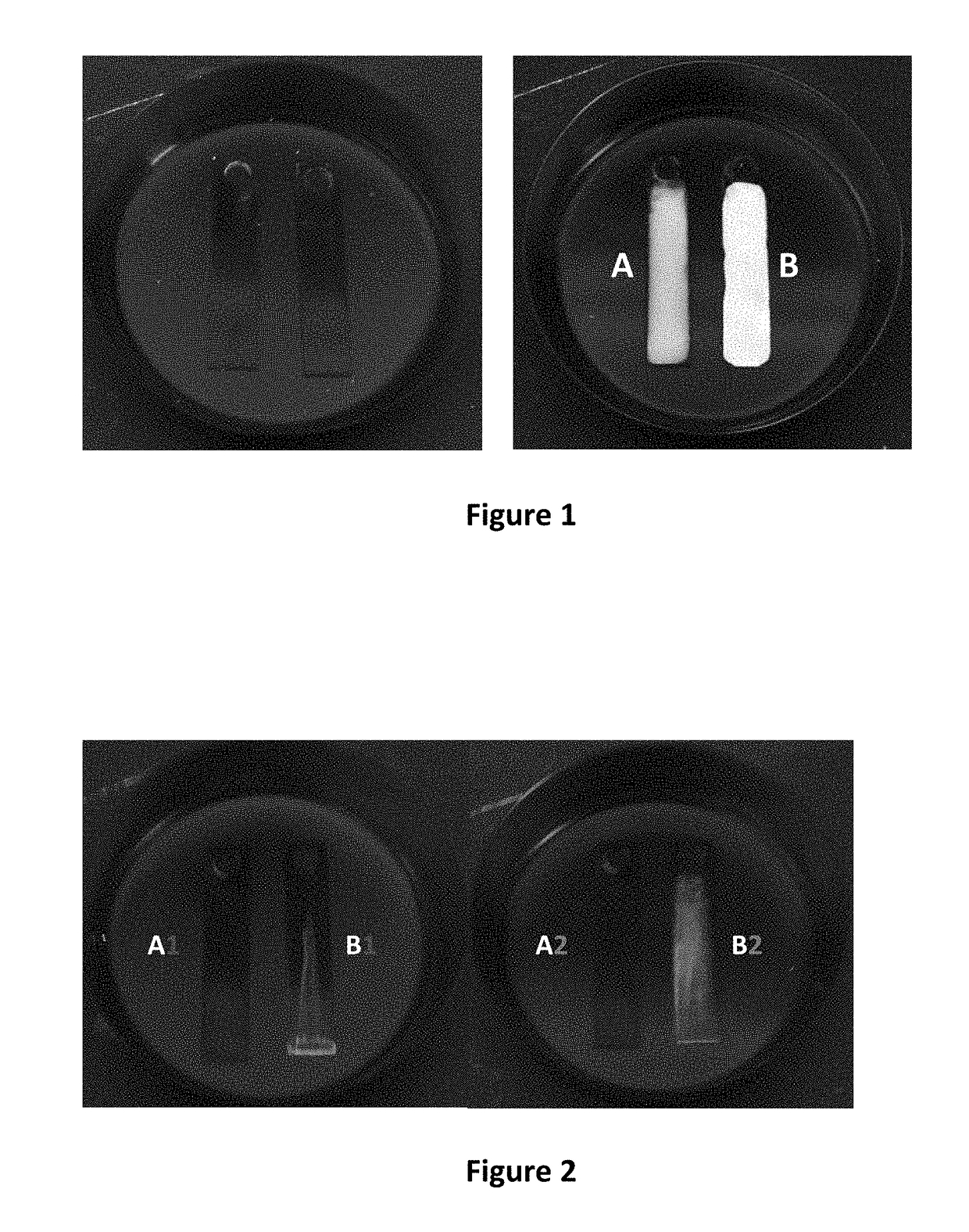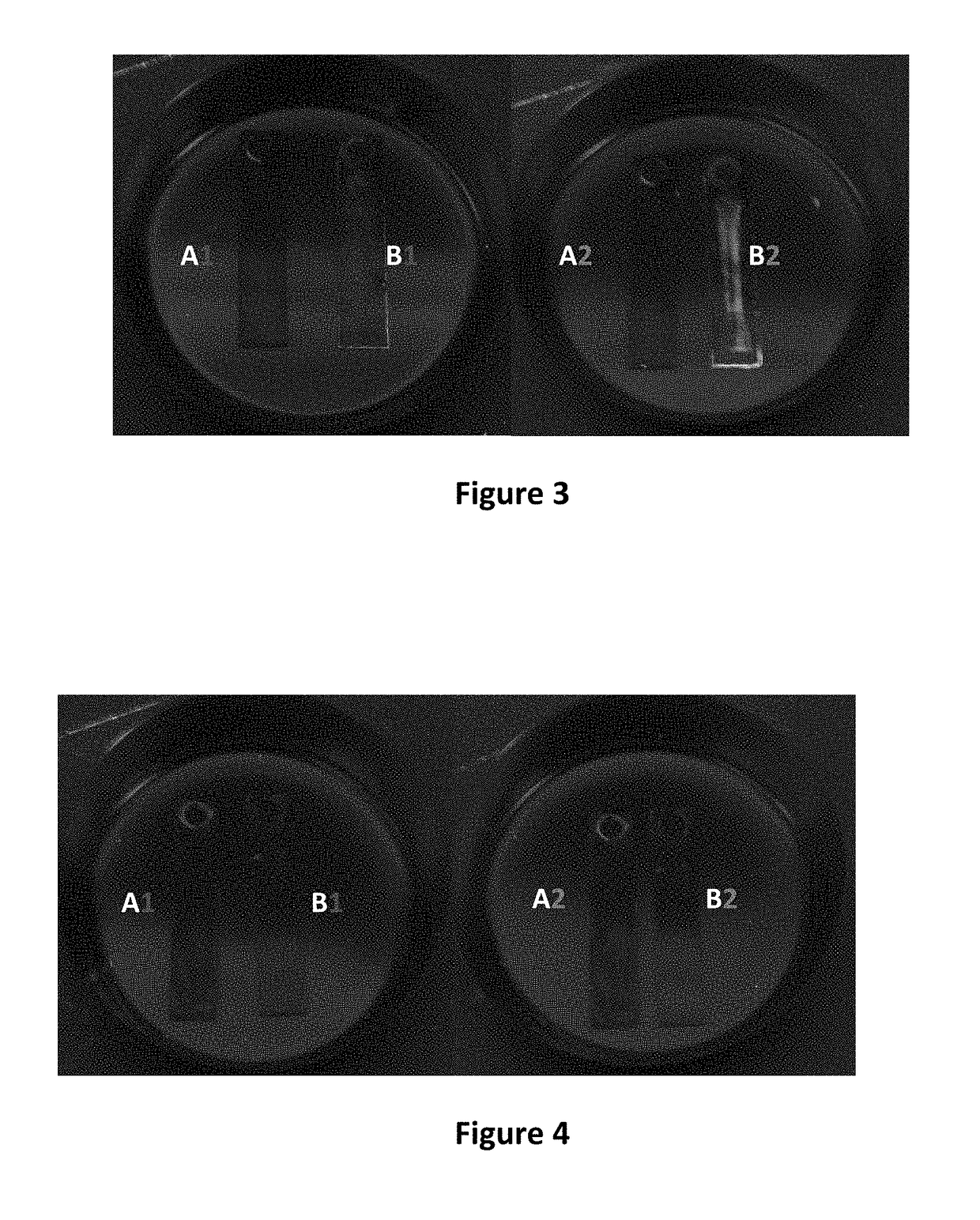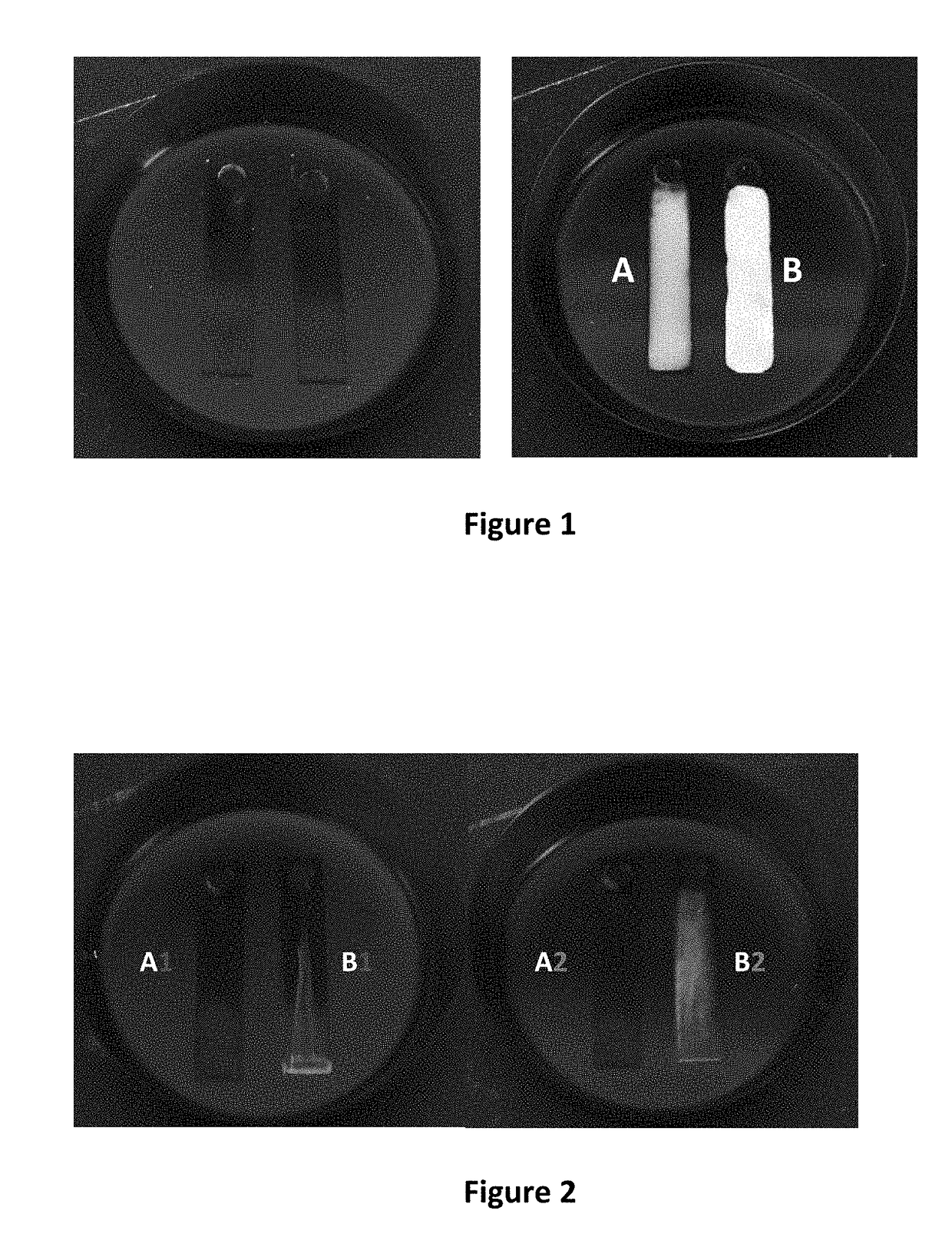Novel minimum boiling azeotrope of n-butyl-3-hydroxybutyrate and n-undecane and application of the azeotrope to solvent cleaning
a technology of n-butyl-3-hydroxybutyrate and n-undecane, which is applied in the direction of non-ionic surface active compounds, detergent compositions, surface-active detergent compositions, etc., can solve the problems of contaminated metal parts, unable to meet the requirements of solvent cleaning,
- Summary
- Abstract
- Description
- Claims
- Application Information
AI Technical Summary
Benefits of technology
Problems solved by technology
Method used
Image
Examples
example 1
Vapor-Liquid Equilibrium Measurements
[0026]The true azeotropic composition was determining by measuring activity coefficients at infinite dilution. The non-idealities of the liquid solution were measured under isobaric conditions at 100 Torr assuming ideal vapor behavior by a differential ebulliometry technique. Samples of highly pure (>99.5 wt. %) n-undecane and n-butyl-3-hydroxybutyrate both available from Eastman Chemical Company in Kingsport, Tenn. were used for the measurements. Prior to analysis, the pure liquid samples were dried over calcium sulfate desiccant (Drie-rite) for one week. For measurement of the infinite dilution activity coefficients of n-butyl-3-hydroxybutyrate in n-undecane solvent, 150 mL samples of n-undecane were charged to two equilibrium boiling stills (ebulliometers) connected in parallel to a single pressure manifold through a ballast tank. Pressure was maintained at 100 Torr absolute via a Ruska pressure controller. The boiling chambers were vacuum ins...
example 2
Vapor Degreasing of Straight Oil by Weight Loss
[0028]The cleaning efficacy of the n-butyl-3-hydroxybutyrate-undecane azeotrope was first tested against a highly nonpolar heavy straight oil (Castrol MolyDee) containing refined petroleum oil, paraffin waxes as lubricants and chlorinated paraffins as high pressure additive. As a comparison, neat n-undecane and a zeotropic blend of PnB-DMM containing a lower alcohol additive to increase polar solvency were tested as standards. For each experiment, a coating of the straight oil was added to 1 cm×5 cm×0.2 mm aluminum test coupons and baked on in an 80° C. oven for 16 hrs. For vapor degreasing testing, the cleaning solvent was added to a 2 L thermostatically-jacket glass test reactor. Heating of the solvent was controlled by circulating a high temperature heat transfer fluid through the jacket and vacuum was supplied by a diaphragm-style vacuum pump. Multiple test coupons could be suspended in the vapor space and tested simultaneously. Cle...
examples 3-4
Cleaning Performance by Ultraviolet Fluorescence
[0030]The cleaning performance of the n-butyl-3-hydroxybutyrate-undecane azeotrope was further evaluated in degreasing of two additional contaminants by fluorescence measurements. Many organic materials in common metalworking soils fluoresce when exposed to ultraviolet radiation. For these measurements, an ultra-heavy duty straight oil (Comminac SCS27) and an emulsifiable oil (Starsol 775AL) were selected. The straight oil is largely nonpolar in nature while the emulsifable / soluble oil contains a number of highly polar amine-based additives and sodium sulfonate surfactants. The n-butyl-3-hydroxybutyrate-undecane azeotrope of the present invention was tested against a PnB-DMM binary blend and a PnB-DMM blend modified with an additional alcohol additive for improved polar solvency. In a similar fashion to previous testing, a coating of the oil contaminant was applied to aluminum test coupons and dried on overnight at room temperature. Be...
PUM
| Property | Measurement | Unit |
|---|---|---|
| Temperature | aaaaa | aaaaa |
| Temperature | aaaaa | aaaaa |
| Temperature | aaaaa | aaaaa |
Abstract
Description
Claims
Application Information
 Login to View More
Login to View More - R&D
- Intellectual Property
- Life Sciences
- Materials
- Tech Scout
- Unparalleled Data Quality
- Higher Quality Content
- 60% Fewer Hallucinations
Browse by: Latest US Patents, China's latest patents, Technical Efficacy Thesaurus, Application Domain, Technology Topic, Popular Technical Reports.
© 2025 PatSnap. All rights reserved.Legal|Privacy policy|Modern Slavery Act Transparency Statement|Sitemap|About US| Contact US: help@patsnap.com



